







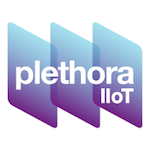



























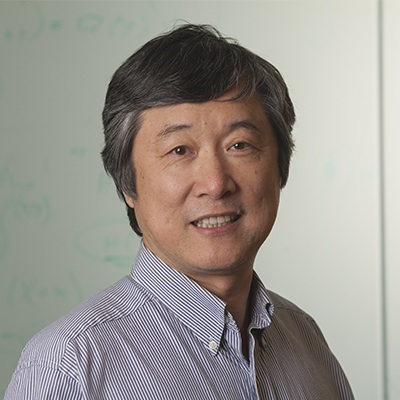
Summary
Most of deep learning
algorithms are supervised, requiring a large amount of paired
input-output data to train the parameters (e.g. DNN weights) in the
learning systems. Such data are often very expensive to acquire in many
practical applications. Unsupervised learning is aimed to eliminate the
use of such costly training data in learning the system parameters, and
is expected to become a new driving force for the future breakthroughs
in artificial intelligence (AI) applications.
The key to
successful unsupervised learning is to intelligently exploit rich
sources of world knowledge and prior information, including inherent
statistical structures of input and output, nonlinear (bi-directional)
relations between input and output (both inside and outside the
application domains), and distributional properties of input/output
sequences. In this keynote, I will present a set of recent experiments
on unsupervised learning in sequential classification tasks. The novel
unsupervised learning algorithm to be described, inspired by concepts
from cryptography research, carefully explores the statistical structure
in output sequences, and is shown to achieve classification accuracy
comparable to the fully supervised system.
Short-bio
Li Deng recently joined
Citadel, one of the most successful investment firms in the world, as
its Chief AI Officer. Prior to Citadel, he was Chief Scientist of AI and
Partner Research Manager at Microsoft. Prior to Microsoft, he was a
tenured Full Professor at the University of Waterloo in Ontario, Canada
as well as teaching/research at MIT (Cambridge), ATR (Kyoto, Japan) and
HKUST (Hong Kong). He is a Fellow of the IEEE, a Fellow of the
Acoustical Society of America, and a Fellow of the ISCA. He has been
Affiliate Professor at University of Washington (since 2000).
He
was on Board Governors of the IEEE Signal Processing Society and of
Asian-Pacific Signal and Information Processing Association (2008-2010).
He was Editors-in-Chief of IEEE Signal Processing Magazine (2009-2011)
and IEEE/ACM Transactions on Audio, Speech, and Language Processing
(2012-2014), for which he received the IEEE SPS Meritorious Service
Award. He received the 2015 IEEE SPS Technical Achievement Award for his
'Outstanding Contributions to Automatic Speech Recognition and Deep
Learning' and numerous best paper and scientific awards for the
contributions to artificial intelligence, machine learning, multimedia
signal processing, speech and human language technology, and their
industrial applications. (https://lidengsite.wordpress.com/publications-books/)

Summary
Deep learning has made
great progress in a variety of language tasks. However, there are still
many practical and theoretical problems and limitations. In this talk I
will introduce solutions to some of these:
How to predict previously
unseen words at test time.
How to have a single input and output
encoding for words.
How to grow a single model for many tasks.
How
to use a single end-to-end trainable architecture for question
answering.
Short-bio
Richard Socher is Chief
Scientist at Salesforce where he leads the company's research efforts
and works on bringing state of the art artificial intelligence solutions
to Salesforce.
Prior to Salesforce, Richard was the CEO and founder
of MetaMind, a startup acquired by Salesforce in April 2016. MetaMind's
deep learning AI platform analyzes, labels and makes predictions on
image and text data so businesses can make smarter, faster and more
accurate decisions than ever before.
Richard was awarded the
Distinguished Application Paper Award at the International Conference on
Machine Learning (ICML) 2011, the 2011 Yahoo! Key Scientific Challenges
Award, a Microsoft Research PhD Fellowship in 2012, a 2013 'Magic Grant'
from the Brown Institute for Media Innovation, the 2014 GigaOM Structure
Award and is currently a member of the WEF Young Global Leaders Class of
2017.
Richard obtained his PhD from Stanford working on deep learning
with Chris Manning and Andrew Ng and won the best Stanford CS PhD thesis
award.

Summary
This course covers the
fundamentals of different deep learning architectures, which will be
explained through three types of mainstream applications, to image
processing, pattern recognition and computer vision. A range of network
architectures will be reviewed, including multi-layer perceptrons,
sparse auto-encoders, restricted Boltzmann machines, and convolutional
neural networks. These networks will be illustrated with applications in
three categories, each characterized by the type of output into which
the input image is transformed. Specifically, the categories are
characterized by:
i) Image to image transformation (e.g., image
denoising and colorization -- here the output is an image of the same
complexity as the input)
ii) Image to mid-level representation (e.g.,
image segmentation, contour detection -- here the output image is
compact as it depicts only certain succinct properties of the
image)
iii) Image to high-level representation (e.g., image
classification, object detection and face recognition -- here the output
is a description of the input image, confined to a small number of bits)
Syllabus
Basics and Network
Architectures:
1) Basic concepts from Probability and information
theory
2) Introduction to linear classifiers, logistic regression,
gradient descent and optimization
3) Neural networks and
backpropagation
4) Sparse auto-encoders and restricted Boltzmann
machines
5) Basics of convolutional neural networks
6) General
practices in model training
7) Deconvolution, ConvNet
visualization
8) Popular ConvNet architectures used in computer
vision.
Applications:
1) Image Denoising, Image
Colorization
2) Clustering, Image Segmentation, Contour
Detection
3) Image Classification, Object Detection, Face Recognition
References
[1] Christopher. M.
Bishop, Neural Networks for Pattern Recognition, 1995.
[2] Ian
Goodfellow, Yoshua Bengio and Aaron Courville, Deep Learning, MIT Press,
2017.
[3] Y. LeCun, B. Boser, J. S. Denker, D. Henderson, R. E.
Howard, W. Hubbard and L. D. Jackel, Backpropagation Applied to
Handwritten Zip Code Recognition, Neural Computation, 1989.
[4] A.
Krizhevsky, I. Sutskever and G. E. Hinton, Imagenet Classification with
Deep Convolutional Neural Networks, NIPS, 2012.
[5] Ross Girshick,
Jeff Donahue, Trevor Darrell and Jitendra Malik, Rich Feature
Hierarchies for Accurate Object Detection and Semantic Segmentation,
CVPR, 2014.
[6] Yaniv Taigman, Ming Yang, Marc'Aurelio Ranzato
and Lior Wolf, DeepFace: Closing the Gap to Human-Level Performance in
Face Verification, CVPR, 2014.
[7] Jonathan Long, Evan Shelhamer and
Trevor Darrell, Fully Convolutional Networks for Semantic Segmentation,
CVPR, 2015.
[8] E Ergul, N Arica, N. Ahuja and S. Erturk, Clustering
Through Hybrid Network Architecture With Support Vectors, IEEE Trans. on
Neural Network and Learning Systems, 2016.
[9] Richard Zhang, Phillip
Isola, Alexei A. Efros. Colorful Image Colorization, ECCV, 2016.
Pre-requisites
Linear Algebra and
Calculus, Probability and Statistics.Basics of Image Processing, Pattern
Recognition and Computer Vision
Short-bio
Narendra
Ahuja is Research Professor at the University of Illinois at
Urbana-Champaign Dept. of Electrical and Computer Engineering, Beckman
Institute, and Coordinated Science Laboratory, and Founding Director of
Information Technology Research Academy, Ministry of Electronics and
Information Technology, Government of India. He received B.E. with
honors in electronics engineering from Birla Institute of Technology and
Science, Pilani, India, M.E. with distinction in electrical
communication engineering from Indian Institute of Science, Bangalore,
India, and Ph.D. in computer science from University of Maryland,
College Park, USA. In 1979, he joined the faculty of the University of
Illinois where he was Donald Biggar Willet Professor of Engineering
until 2012. During 1999-2002, he served as the Founding Director of
International Institute of Information Technology, Hyderabad, India. He
has co-authored the books Pattern Models (Wiley), Motion and Structure
from Image Sequences (Springer-Verlag), and Face and Gesture Recognition
(Kluwer). He awards include: Emanuel R. Piore award of the IEEE,
Technology Achievement Award of the International Society for Optical
Engineering, and TA Stewart-Dyer/Frederick Harvey Trevithick Prize of
the Institution of Mechanical Engineers; and with his students, best
paper awards from International Conferences on Pattern Recognition
(Piero Zamperoni Award, etc.), Symposium on Eye Tracking Research and
Applications, IEEE International Workshop on Computer Vision in Sports
and IEEE Transactions on Multimedia. He has received 4 patents. His
algorithms and prototype systems have been used by about 10
companies/other organizations. He is a fellow of IEEE, AAAI, IAPR, ACM,
AAAS and SPIE.
This course will be offered in collaboration with
Dr. Jagannadan Varadarajan, Research Scientist, Advanced Digital
Sciences Center, Singapore. Dr. Jagannaddan received his Ph.D. in
computer science from EPFL, Switzerland in 2012. His interests include
computer vision and machine learning.

Summary
The process of learning is
essential for building natural or artificial intelligent systems. Thus,
not surprisingly, machine learning is at the center of artificial
intelligence today. And deep learning--essentially learning in complex
systems comprised of multiple processing stages--is at the forefront of
machine learning. The lectures will provide an overview of neural
networks and deep learning with an emphasis on first principles and
theoretical foundations. The lectures will also provide a brief
historical perspective of the field. Applications will be focused on
difficult problems in the natural sciences, from physics, to chemistry,
and to biology.
Syllabus
1: Introduction and
Historical Background. Building Blocks. Architectures. Shallow Networks.
Design and Learning.
2: Deep Networks. Backpropagation.
Underfitting, Overfitting, and Tricks of the Trade.
3: Two-Layer
Networks. Universal Approximation Properties. Autoencoders.
4:
Learning in the Machine. Local Learning and the Learning Channel.
Dropout. Optimality of BP and Random BP.
5: Convolutional Neural
Networks. Applications.
6: Recurrent Networks. Hopfield model.
Boltzmann machines.
7: Recursive and Recurrent Networks. Design and
Learning. Inner and Outer Approaches.
8: Applications to
Physics.
9: Applications to Chemistry.
10: Applications to
Biology.
Pre-requisites
Basic algebra,
calculus, and probability at the introductory college level. Some
previous knowledge of machine learning could be useful but it not
required.
Short-bio
Pierre Baldi earned MS
degrees in Mathematics and Psychology from the University of Paris, and
a PhD in Mathematics from the California Institute of Technology. He is
currently Chancellor's Professor in the Department of Computer Science,
Director of the Institute for Genomics and Bioinformatics, and Associate
Director of the Center for Machine Learning and Intelligent Systems at
the University of California Irvine. The long term focus of his research
is on understanding intelligence in brains and machines. He has made
several contributions to the theory of deep learning, and developed and
applied deep learning methods for problems in the natural sciences such
as the detection of exotic particles in physics, the prediction of
reactions in chemistry, and the prediction of protein secondary and
tertiary structure in biology. He has written four books and over 300
peer-reviewed articles. He is the recipient of the 1993 Lew Allen Award
at JPL, the 2010 E. R. Caianiello Prize for research in machine
learning, and a 2014 Google Faculty Research Award. He is and Elected
Fellow of the AAAS, AAAI, IEEE, ACM, and ISCB.

Summary
The abundance of devices
with cameras and numerous real-world application scenarios for AI and
autonomous robots create an increasing demand for human-level visual
perception of complex scenes. Hierarchical convolutional neural networks
have a long and successful history for learning pattern recognition
tasks in visual perception. They extract increasingly complex features
by local, convolutional computations, and create invariances to
transformations by pooling operations. In recent years, advances in
parallel computing, such as the use of programmable GPUs, the
availability of large annotated image and video data sets, and advances
in deep learning methods yielded dramatic progress in visual perception
performance. The course will cover motivations for deep convolutional
networks from visual statistics and visual cortex, feed-forward networks
for image categorization, object detection, and object-class
segmentation, recurrent architectures for visual perception, 3D
perception, and spatial transformations in convolutional networks.
State-of-the-art examples from computer vision and robotics will be used
to illustrate the approaches.
Syllabus
1. Motivation of deep
convolutional networks by image statistics
2. Biological
background: Visual cortex
3. Feed-forward convolutional networks for
image categorization
4. Object detection
5. Semantic
segmentation
6. Recurrent convolutional networks for video
processing
7. 3D perception
8. Spatial image transformations
References
[1] Y. LeCun, L.
Bottou, Y. Bengio, P. Haffner: Gradient-based learning applied to
document recognition. Proceedings of the IEEE 86(11):2278-2324, 1998
[2] S. Behnke: Hierarchical neural networks for image interpretation,
LNCS 2766, Springer, 2003.
[3] D. Scherer, A. C. Müller, S. Behnke:
Evaluation of pooling operations in convolutional architectures for
object recognition. ICANN, 2010.
[4] D Scherer, H Schulz, S Behnke:
Accelerating large-scale convolutional neural networks with parallel
graphics multiprocessors. ICANN, 2010.
[5] H Schulz, S Behnke:
Learning Object-Class Segmentation with Convolutional Neural Networks,
ESANN, 2012.
[6] R. Memisevic: Learning to Relate Images. IEEE
Trans. Pattern Anal. Mach. Intell. 35(8): 1829-1846, 2013.
[7] J.
Schmidhuber: Deep learning in neural networks: An overview. Neural
Networks 61: 85-117, 2015.
[8] M Schwarz, H Schulz, S Behnke: RGB-D
object recognition and pose estimation based on pre-trained
convolutional neural network features. ICRA, 2015.
[9] I.
Goodfellow, Y. Bengio, A. Courville: Deep learning, MIT Press, 2016.
[10] M. S. Pavel, H. Schulz, S. Behnke: Object class segmentation of
RGB-D video using recurrent convolutional neural networks. Neural
Networks 88:105-113, 2017.
[11] M. Schwarz, A. Milan, A.S.
Periyasamy, S. Behnke: RGB-D object detection and semantic segmentation
for autonomous manipulation in clutter. International Journal of
Robotics Research, 2017.
[12] J. Dai, H.i Qi, Y. Xiong, Y. Li, G.
Zhang, H.Hu, Y. Wei: Deformable Convolutional Networks.
arXiv:1703.06211, 2017
Pre-requisites
Basic knowledge of
neural networks, image processing, and machine learning
Short-bio
Sven Behnke is professor
for Autonomous Intelligent Systems at University of Bonn, Germany. He
received a MS degree in Computer Science in 1997 from
Martin-Luther-Universität Halle-Wittenberg and has been investigating
deep learning since. In 1998, he proposed a hierarchical recurrent
convolutional neural architecture – Neural Abstraction Pyramid – for
which he developed unsupervised methods for learning feature hierarchies
and supervised training for computer vision tasks like superresolution,
image reconstruction, semantic segmentation, and object detection. In
2002, he obtained a PhD in Computer Science on the topic Hierarchical
Neural Networks for Image Interpretation from Freie Universität Berlin.
He spent the year 2003 as postdoctoral researcher at the International
Computer Science Institute, Berkeley, CA. From 2004 to 2008, Sven Behnke
headed the Humanoid Robots Group at Albert-Ludwigs-Universität Freiburg.
His research interests include deep learning and cognitive robotics.

Summary
There has been a surge of
opportunities for the development of deep learning algorithms &
platforms for advanced vision systems and smart robots to operate
indoors (in messy living environments), underwater, and in the air (with
drones). This has been boosted by the availability of high performance
computing, large amounts of visual data (big data), and the recent
introduction of new sensors (e.g., 3D video sensors). These systems will
reduce the expensive costs associated with elder's health and home
care expenses, and enhance competitiveness in agriculture & marine
economies. This lecture will give a brief introduction to Computer
Vision, then provides a detailed cover of Artificial neural networks,
and focus on two main deep learning networks, namely Convolutional
Neural Networks (CNNs), and Auto-encoders and their applications in the
development of vision systems.
Syllabus
Session 1: In this
session we will address the following: what is computer vision; feature
extraction and classification; why deep learning (engineered features vs
learned features); importance of sensing, high performance computing,
and big data for deep learning; image understand and ultimate goal of
computer vision.
Session 2: Artificial Neural Networks
basics: artificial neuron characteristics (activation function); types
of architectures (feed-forward networks vs. recurrent networks); types
of learning rules.
Session 3: Feed-forward networks and their
training: Single Layer Perceptron (SLP), Multi-layer Perceptron (MLP),
and back-propagation.
Session 4: Deep learning and why
training is difficult with more layers, and how to solve it (how to
train and debug large-scale and deep multi-layer neural networsk).
Session 5: Convolutional Neural Networks & variants (with
tools & libraries), and their application to computer vision.
Session 6: Auto-Encoders and their application to computer
vision
References
Artificial Neural
Network basics:
[1] M. Bennamoun, Lecture notes on Slideshare:
https://www.slideshare.net/MohammedBennamoun/presentations
[2]
Richard Lippmann “An Introduction to Computing with Neural Nets”, IEEE
ASSP Magazine, April 1997.
[3] Richard Lippmann, “Pattern
Classification using Neural Networks”, IEEE Communication Magazine,
November 1989.
[4] Anil Jain, Jianchang Mao, and K.M. Mohiuddin,
“Artificial Neural Networks: A Tutorial”, IEEE Computer Magazine, Vol.
29, Issue 3, March 1996.
[5] L. Fausett, “Fundamentals of Neural
Networks”, Prentice-Hall, 1994.
[6] J.M. Zurada, “Introduction to
Artificial Neural Systems”, West Publishing Company, 1992.
Deep
learning:
[7] H. Larochelle, Y. Bengio, J. Louradour, and P.
Lamblin, “Exploring Strategies for Training Deep Neural Networks”,
Journal of Machine Learning Research, 2009.
[8] Y. Bengio, “Learning
Deep Architectures for AI”, Foundations and Trends in Machine Learning,
2009.
CNN:
[9] Y. LeCun, L. Bottou, G. Orr, and K.-R. Mller,
“Efficient backprop,” in Neural Networks: Tricks of the Trade. New York,
NY, USA: Springer, 2012, vol. 7700, pp. 9–48.
[10] S. H Khan, M.
Bennamoun, F. Sohel, and R. Togneri, “Automatic shadow detection and
removal from a single image”, IEEE transactions on pattern analysis and
machine intelligence, Vol. 38(3), 2016.
Auto-encoders:
[11] M
Hayat, M Bennamoun, S An, “Deep reconstruction models for image set
classification”, Vol. 37 (4), 2015.
Pre-requisites
Basic knowledge of
linear algebra, and statistics
Short-bio
Mohammed Bennamoun is
currently a W/Professor at the School of Computer Science and Software
Engineering at The University of Western Australia. He lectured in
robotics at Queen's, and then joined QUT in 1993 as an associate
lecturer. He then became a lecturer in 1996 and a senior lecturer in
1998 at QUT. In January 2003, he joined The University of Western
Australia as an associate professor. He was also the director of a
research center from 1998-2002. He is the co-author of the book Object
Recognition: Fundamentals and Case Studies (Springer-Verlag, 2001). He
has published close to 100 journals and 250 conference publications. His
areas of interest include control theory, robotics, obstacle avoidance,
object recognition, artificial neural networks, signal/image processing,
and computer vision. More information is available on his website.
This course will be delivered with the help of Dr. H. Rahmani
& Dr. S.A. Shah:
Syed Afaq Ali Shah obtained his PhD from
the University of Western Australia (UWA) in the area of 3D computer
vision. He currently works as a research associate at UWA. His research
interests include deep learning, 3D face/object recognition, 3D
modelling and image segmentation.
Hossein Rahmani completed
his PhD from The University of Western Australia. He has published
several papers in conferences and journals such as CVPR, ECCV, and
TPAMI. He is currently a Research Fellow in the School of Computer
Science and Software Engineering at The University of Western Australia.
His research interests include computer vision, action recognition, 3D
shape analysis, and machine learning.
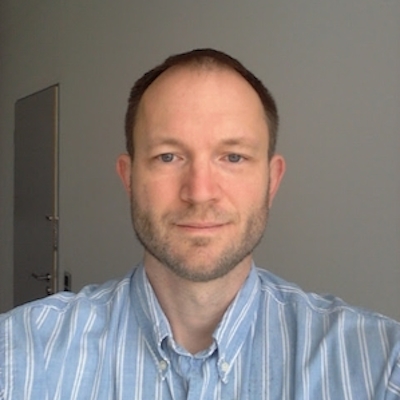
Summary
Applied Deep Learning for
Visual Computing, Autonomous Vehicles, and Gaming
Syllabus
Research and development
at NVIDIA focuses on applying deep learning to key application areas for
visual computing:
- self-driving cars
- inside-out tracking for
VR/AR
- text recognition
- gesture recognition and analysis
- smart cameras
- video gaming
- robotics
Building these
systems requires a mix of deep learning techniques, distributed systems,
efficient GPU computing, combined with traditional methods from computer
vision, image processing, and statistical decision theory.
My
lectures will focus on techniques and models that are important for
building such systems, but that we find (in our interviews) are often
not covered well in academic deep learning courses.
Part 1:
Review of deep networks for computer vision applications. Connections
between deep learning algorithms, classical machine learning, and
signal/image processing. Bayesian decision theory and modular neural
networks.
Part 2: From model-based approaches to deep learning.
Scene text and document recognition as model-based computer vision;
statistical models of context; deep learning variants; single
dimensional and multi-dimensional recurrent neural networks. Style
modeling. Large scale semi-supervised and unsupervised learning.
Part 3: Optical flow, texture segmentation, semantic segmentation. An
overview of classical models and image formation. The use of synthetic
data and style transfer for synthetic training. Current deep-learning
based approaches. Multidmensional LSTMs for segmentation
problems.
References
Goodfellow, Ian, Yoshua
Bengio, and Aaron Courville. Deep learning. MIT press, 2016.
Strang,
Gilbert, and Kaija Aarikka. Introduction to applied mathematics. Vol.
16. Wellesley, MA: Wellesley-Cambridge Press, 1986.
Pre-requisites
Participants should
have basic familiarity with deep learning, including common
architectures and training methods.
Short-bio
Thomas Breuel works on
deep learning and computer vision at NVIDIA Research, with applications
to self-driving cars, gaming, and image/video analysis. Prior to NVIDIA,
he was a full professor of computer science at the University of
Kaiserslautern (Germany) and worked as a researcher at Google, Xerox
PARC, the IBM Almaden Research Center, IDIAP, Switzerland, as well as a
consultant to the US Bureau of the Census. He is an alumnus of the
Massachusetts Institute of Technology and Harvard University.

Summary
For the purposes of this
short course, behaviors are the dynamics exhibited by systems over time.
There is growing interest and success in applying various types of
machine learning techniques to the modeling and learning of human,
natural and machine generated behaviors. This course will review a
variety of behavior modeling approaches and provide a tutorial on
classical, recurrent neural network and recurrent deep learning methods
for learning behaviors. Application areas will include social behaviors,
computer systems behaviors for security purposes and as well as other
domains.
Syllabus
- Overview of behavior
modeling and application domains
- Goals of and metrics for behavior
learning
- Recurrent neural networks and long short term memory
(LSTM)
- Software implementations and hands on exercises
(TensorFlow, Keras)
- Comparisons with classical methods
References
Pre-requisites
Familiarity with
numerical linear algebra, probability and statistics, machine learning
basics.
Short-bio
George Cybenko is the
Dorothy and Walter Gramm Professor of Engineering at Dartmouth.
Professor Cybenko has made research contributions in signal processing,
neural computing, parallel computing and computational behavioral
analysis. He was the Founding Editor-in-Chief of IEEE/AIP Computing in
Science and Engineering, IEEE Security & Privacy and IEEE Transactions
on Computational Social Systems. Professor Cybenko is a Fellow of the
IEEE, received the 2016 SPIE Eric A. Lehrfeld Award for poutstanding
contributions to global homeland security and the US Air Force
Commander's Public Service Award. He obtained his BS (Toronto) and PhD
(Princeton) degrees in Mathematics. He has held visiting appointments at
MIT, Stanford and Leiden University where we has the Kloosterman
Visiting Distinguished Professor. Cybenko is co-founder of Flowtraq Inc
(http://www.flowtraq.com) which focuses on commercial software and
services for large-scale network flow security and analytics.

Summary
The course will cover the
primary exact and approximate algorithms for reasoning with
probabilistic graphical models (e.g., Bayesian and Markov networks,
influence diagrams, and Markov decision processes). We will present
inference-based, message passing schemes (e.g., variable elimination)
and search-based, conditioning schemes (e.g., cycle-cutset conditioning
and AND/OR search). Each algorithm class possesses distinct
characteristics and in particular has different time vs. space behavior.
We will emphasize the dependence of the methods on graph parameters such
as the treewidth, cycle-cutset, and (pseudo-tree) height. We will start
from exact algorithms and move to approximate schemes that are anytime,
including weighted mini-bucket schemes with cost-shifting and MCMC
sampling.
Syllabus
Class 1: Introduction and
Inference schemes
• Basic Graphical models
– Queries
–
Examples/applications/tasks
– Algorithms
overview
• Inference algorithms, exact
– Bucket elimination
– Jointree clustering
– Elimination orders
•
Decomposition Bounds
– Dual Decomposition,
GDD
– MBE/WMBE
– Belief Propagation
Class 2: Search
Schemes
• AND/OR search spaces, pseudo-trees
– AND/OR search trees
– AND/OR search graphs
– Generating good pseudo-trees
•
Heuristic search for AND/OR spaces
–
Brute-force traversal
– Depth-first AND/OR
branch and bound
– Best-first AND/OR
search
– The Guiding MBE heuristic
– Marginal Map (max-sum-product)
• Hybrids of search and Inference
Class 3:
• Variational methods
–
Convexity & decomposition bounds
–
Variational forms & the marginal polytope
–
Message passing algorithms
– Convex duality
relationships
• Monte Carlo sampling
– Basics
–
Importance sampling
– Markov chain Monte
Carlo
– Integrating inference and
sampling
References
Rina Dechter:
Reasoning with Probabilistic and Deterministic Graphical Models: Exact
Algorithms. Synthesis Lectures on Artificial Intelligence and Machine
Learning, Morgan & Claypool Publishers 2013
Alexander Ihler,
Natalia Flerova, Rina Dechter, and Lars Otten. "Join-graph based
cost-shifting schemes" in Proceedings of UAI 2012
Dechter, R.
and Rish, I., "Mini-Buckets: A General Scheme for Bounded
Inference" In "Journal of the ACM", Vol. 50, Issue 2:
pages 107-153, March 2003.
Robert Mateescu, Kalev Kask, Vibhav
Gogate, and Rina Dechter. "Join-Graph Propagation Algorithms."
JAIR'2009
Pre-requisites
Basic Computer
Science
Short-bio
Rina Dechter research
centers on computational aspects of automated reasoning and knowledge
representation including search, constraint processing, and
probabilistic reasoning. She is a professor of computer science at the
University of California, Irvine. She holds a Ph.D. from UCLA, an M.S.
degree in applied mathematics from the Weizmann Institute, and a B.S. in
mathematics and statistics from the Hebrew University in Jerusalem. She
is an author of Constraint Processing published by Morgan Kaufmann
(2003), and Reasoning with Probabilistic and Deterministic Graphical
Models: Exact Algorithms by Morgan and Claypool publishers, 2013, has
co-authored over 150 research papers, and has served on the editorial
boards of: Artificial Intelligence, the Constraint Journal, Journal of
Artificial Intelligence Research (JAIR), and Journal of Machine Learning
Research (JMLR). She is a fellow of the American Association of
Artificial Intelligence 1994, was a Radcliffe Fellow 2005–2006, received
the 2007 Association of Constraint Programming (ACP) Research Excellence
Award, and she is a 2013 ACM Fellow. She has been Co-Editor- in-Chief of
Artificial Intelligence since 2011. She is also co-editor with Hector
Geffner and Joe Halpern of the book Heuristics, Probability and
Causality: A Tribute to Judea Pearl, College Publications, 2010.
Alex Ihler is an associate professor of computer science at the
University of California, Irvine. He received his MS and PhD degrees
from the Massachusetts Institute of Technology in 2000 and 2005, and a
BS from the California Institute of Technology in 1998. His research
spans several areas of machine learning, with a particular focus on
probabilistic, graphical model representations, including Bayesian
networks, Markov random fields, and influence diagrams, and with
applications to domains such as sensor networks, computer vision, and
computational biology. He is the co-author of over 60 research papers,
and the recipient of an NSF CAREER award. He is the director of UC
Irvine's Center for Machine Learning, and has served on the editorial
boards of Machine Learning (MLJ), Artificial Intelligence (AIJ), and the
Journal of Machine Learning Research (JMLR).

Summary
Syllabus
Part I: Basics of Machine
Learning and Applications --- deep and shallow
- machine learning
founding principles
- machine learning and deep learning
-
shallow machine learning vs. deep machine learning
- taxonomy of
machine learning: a learning-paradigm perspective
- taxonomy of
speech, image, text, and multi-modal applications: a signal-processing
perspective
Part II: Deep Neural Networks (DNN): Why gradient
vanishes & how to rescue it
- history of neural nets for speech
recognition: why they failed
- one equation for backprop update ---
why gradients may easily vanish for DNN learning
- five ways of
rescuing gradient vanishing
- an alternative way of training DNN
(deep stacking net)
- recurrent nets: my experiments in 90s (for
speech) and current perspectives
Part III: How Deep Learning
Disrupted Speech (and Image) Recognition
- shallow models dominating
speech: 30+ years from 80s
- deep generative models for speech: 10
years of research before DNN disruption
- pros and cons of
generative vs discriminative models
- how speech is produced and
perceived by human: a comprehensive computational model
- several
theories of human perception
- variational inference/learning for
deep generative speech model (experiments late 90's to mid 2000)
- a
very different kind of deep generative model: deep belief nets
(2006)
- the arrival of DNN for speech and its early successes: a
historical perspective (2009-2011)
- more recent development of deep
learning for speech
- a perspective on recent innovations in speech
recognition
- how to do truly unsupervised learning for future
speech recognition (and other AI tasks)
Part IV: Deep Learning for
Text and Multi-Modal Processing
- AI to move from perception to
cognition: key roles of language/text
- concept of symbolic/semantic
embedding
- word and text embedding
- build text embedding on
top of sub-word units: practical necessity for many applications
-
distant supervised embedding
- deep structured semantic modeling
(DSSM)
- use of DSSM for multi-modal deep learning: Microsoft's
first generation image captioning system
- DSSM for contextual
search in Microsoft Office/Word
Part V: Limitations of Current Deep
Learning and How to Overcome Them
- Interpretability problem
-
Symbolic-neural integration for reasoning: tensor-product
representations
- How do labels come from: the need for unsupervised
learning via rich priors and self learning via interactions
-
Vertical applications
References
G. E. Hinton, R.
Salakutdinov. 'Reducing the Dimensionality of Data with Neural
Networks'.Science 313: 504–507, 2016.
G. E. Hinton, L. Deng, D. Yu,
etc. 'Deep Neural Networks for Acoustic Modeling in Speech Recognition:
The shared views of four research groups,' IEEE Signal Processing
Magazine, pp. 82–97, November 2012. (plus other papers in the same
special issue)
G. Dahl, D. Yu, L. Deng, A. Acero. 'Context-Dependent
Pre-Trained Deep Neural Networks for Large-Vocabulary Speech
Recognition'. IEEE Trans. Audio, Speech, and Language Processing, Vol
20(1): 30–42, 2012. (plus other papers in the same special issue)
Y.
Bengio, A. Courville, and P. Vincent. 'Representation Learning: A Review
and New Perspectives,' IEEE Trans. PAMI, special issue Learning Deep
Architectures, 2013.
J. Schmidhuber. 'Deep learning in neural
networks: An overview,' arXiv, October 2014.
Y. LeCun, Y. Bengio,
and G. Hinton. 'Deep Learning', Nature, Vol. 521, May 2015.
J.
Bellegarda and C. Monz. 'State of the art in statistical methods for
language and speech processing,' Computer Speech and Language, 2015.
Li Deng, Navdeep Jaitly. CHAPTER 1.2 Deep Discriminative and Generative
Models for Speech Pattern Recognition, in Handbook of Pattern
Recognition and Computer Vision (Ed. C.H. Chen), World Scientific, 2016,
Dong Yu and Li Deng, Automatic Speech Recognition – A Deep Learning
Approach, Springer, 2015.
Li Deng and Dong Yu, DEEP LEARNING —
Methods and Applications. NOW Publishers, June 2014.
Goodfellow,
Bengio, Courville. Deep Learning, MIT Press, 2016.
Li Deng and Yang
Liu (eds), Deep Learning in Natural Language Processing, Springer,
2017-2018.
Li Deng and Doug O’Shaughnessy, SPEECH PROCESSING — A
Dynamic and Optimization-Oriented Approach, Marcel Dekker Inc., June
2003.
Pre-requisites
Short-bio
Li Deng recently joined
Citadel, one of the most successful investment firms in the world, as
its Chief AI Officer. Prior to Citadel, he was Chief Scientist of AI and
Partner Research Manager at Microsoft. Prior to Microsoft, he was a
tenured Full Professor at the University of Waterloo in Ontario, Canada
as well as teaching/research at MIT (Cambridge), ATR (Kyoto, Japan) and
HKUST (Hong Kong). He is a Fellow of the IEEE, a Fellow of the
Acoustical Society of America, and a Fellow of the ISCA. He has been
Affiliate Professor at University of Washington (since 2000).
He
was on Board Governors of the IEEE Signal Processing Society and of
Asian-Pacific Signal and Information Processing Association (2008-2010).
He was Editors-in-Chief of IEEE Signal Processing Magazine (2009-2011)
and IEEE/ACM Transactions on Audio, Speech, and Language Processing
(2012-2014), for which he received the IEEE SPS Meritorious Service
Award. He received the 2015 IEEE SPS Technical Achievement Award for his
'Outstanding Contributions to Automatic Speech Recognition and Deep
Learning' and numerous best paper and scientific awards for the
contributions to artificial intelligence, machine learning, multimedia
signal processing, speech and human language technology, and their
industrial applications. (https://lidengsite.wordpress.com/publications-books/)
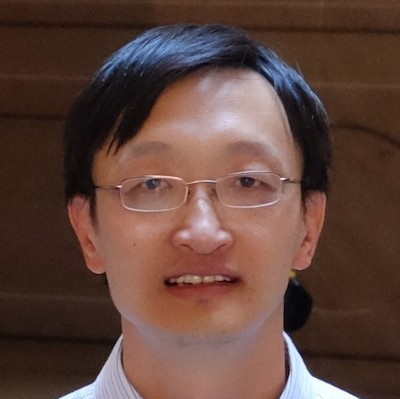
Summary
In this talk, I start with
a brief introduction to the history of deep learning and its application
to natural language processing (NLP) tasks. Then I describes in detail
the deep learning technologies that are recently developed for three
areas of NLP tasks. First is a series of deep learning models to model
semantic similarities between texts and images, the task that is
fundamental to a wide range of applications, such as Web search ranking,
recommendation, image captioning and machine translation. Second is a
set of neural models developed for machine reading comprehension and
question answering. Third is the use of deep learning for various of
dialogue agents, including task-completion bots and social chat bots.
Syllabus
Part 1. Introduction to
deep learning and natural language processing (NLP)
- A brief
history of deep learning
- An example of neural models for query
classification
- Overview of deep learning models for NLP tasks
Part 2. Deep Semantic Similarity Models (DSSM) for text processing
-
Challenges of modeling semantic similarity
- What is DSSM
- DSSM
for Web search ranking
- DSSM for recommendation
- DSSM for
automatic image captioning and other tasks
Part 3. Deep learning for
Machine Reading Comprehension (MRC) and Question Answering (QA) -
Challenges of MRC and QA
- A brief review of symbolic approaches
- From symbolic to neural approaches
- State of the art MRC
models
- Toward an open-domain QA system
Part 4. Deep learning
for dialogue
- Challenges of developing open-domain dialogue
agents
- The development of task-oriented dialogue agents using deep
reinforcement learning
- The development of neural conversation
engines for social chat bots
References
Part 1: Yih, He & Gao. Deep learning and continuous representations for natural language processing. Tutorial presented in HLT-NAACL-2015, IJCAI-2016.
Part 2 (DSSM): We have developed a series of deep semantic similarity models (DSSM, also a.k.a. Sent2Vec), which have been used for many text and image processing tasks, including web search [Huang et al. 2013, Shen et al. 2014], recommendation [Gao et al. 2014a], machine translation [Gao et al. 2014b], and QA [Yih et al. 2015].
Part 3 (MRC): We released a new MRC dataset, called MS MARCO; and have developed a series of reasoning networks for MRC, aka ReasoNet and ReasoNet with shared memory.
Part 4 (Dialogue): We have developed neural network models for social bots trained on Twitter data [project site] and task-completion bots [Lipton et al. 2016;Bhuwan et al. 2016] trained via deep reinforcement learning using a user simulator.
Pre-requisites
No prerequisites.
Short-bio
Jianfeng Gao is Partner Research Manager in Deep Learning Technology Center (DLTC) at Microsoft Research, Redmond. He works on deep learning for text and image processing and leads the development of AI systems for dialogue, machine reading comprehension (MRC), question answering (QA), and enterprise applications. From 2006 to 2014, he was Principal Researcher at Natural Language Processing Group at Microsoft Research, Redmond, where he worked on Web search, query understanding and reformulation, ads prediction, and statistical machine translation. From 2005 to 2006, he was a research lead in Natural Interactive Services Division at Microsoft, where he worked on Project X, an effort of developing natural user interface for Windows. From 1999 to 2005, he was Research Lead in Natural Language Computing Group at Microsoft Research Asia. He, together with his colleagues, developed the first Chinese speech recognition system released with Microsoft Office, the Chinese/Japanese Input Method Editors (IME) which were the leading products in the market, and the natural language platform for Windows Vista.

Summary
A confluence of new
artificial neural network architectures and unprecedented compute
capabilities based on numeric accelerators has reinvigorated interest in
Artificial Intelligence based on neural processing. Initial first
successful deployments in hyperscale internet services are now driving
broader commercial interest in adopting Deep learning as a design
principle for cognitive applications in the enterprise. In this class,
we will review hardware acceleration and co-optimized software
frameworks for Deep Learning, and discuss model development and
deployment to accelerate adoption of Deep Learning based solutions for
enterprise deployments
Syllabus
Session 1:
1. Hardware Foundations of the Great AI
Re-Awakening
2. Deployment models for DNN Training and
Inference
Session 2:
1. Optimized High Performance Training
Frameworks
2. Parallel Training Environments
Session
3:
1. Developing Models with Expressive Interfaces
2. Lab Demo
References
M. Gschwind, Need for
Speed: Accelerated Deep Learning on Power, GPU Technology Conference,
Washington DC, October 2016.
Pre-requisites
tbd.
Short-bio
Dr. Michael Gschwind is
Chief Engineer for Machine Learning and Deep Learning for IBM Systems
where he leads the development of hardware/software integrated products
for cognitive computing. During his career, Dr. Gschwind has been a
technical leader for IBM’s key transformational initiatives, leading the
development of the OpenPOWER Hardware Architecture as well as the
software interfaces of the OpenPOWER Software Ecosystem. In previous
assignments, he was a chief architect for Blue Gene, POWER8, and POWER7.
As chief architect for the Cell BE, Dr. Gschwind created the first
programmable numeric accelerator serving as chief architect for both
hardware and software architecture. In addition to his industry career,
Dr. Gschwind has held faulty appointments at Princeton University and
Technische Universität Wien. While at Technische Universität Wien, Dr.
Gschwind invented the concept of neural network training and inference
accelerators. Dr. Gschwind is a Fellow of the IEEE, an IBM Master
Inventor and a Member of the IBM Academy of Technology.

Summary
Human emotion is an
internal state of human brain which makes different decision and
behavior from same sensory inputs. Therefore, for efficient interactions
between human and machine, i.e. chatbot, it is important for the machine
to estimate human emotions. Due to the internal nature, the
classification accuracy of the emotion from a single modality is not
high. For example, our result was ranked as Top-1 with only 61.6%
accuracy for the emotion recognition task from facial images at
EmotiW2015 challenge. In this tutorial we will first present a
hierarchical Committee machine to win EmotiW2015 challenge, and further
extend the ideas to multi-modal classification with top-down attention
and identification of brain signals for the two other brain internal
states.
At the first talk (between 9:30 to 11:15 am), we
will start with our hierarchical committee machine of many deep neural
networks for the EmotiW2015 challenge. To take advantage of the
Committee it is important to recruit mutually-independent committee
members. For example, we had deployed 6 different pre-processing, 12
network architectures, and 3 random initializations. Also, 2-layer
hierarchical Committee was incorporated. In addition, we had extensive
utilization of data augmentation to win the EmotiW2015.
At the
second talk (between 2:30 to 4:15 pm), to improve the accuracy,
we will add speech and text modalities to recognize human emotions. We
will discuss how to combine those three modalities based on Early
Integration and Late Integration models. Also, we will introduce a new
integration method based on top-down attention. Although bottom-up
attention becomes quite popular for deep learning, top-down attention
had played critical roles for the recognition of noisy and superimposed
patterns, and will be further extended to multi-modal integration.
Actually, there exist much more top-down synapses than bottom-up
synapses in our brain.
At the third talk (between 11:45 am to
13:30 pm), we will introduce more general brain internal states,
of which popular one is emotion. Especially, we made hypothesis on 2
axes of the internal state space, i.e., agreement/disagreement and
trust/distrust to conversational counterparts during conversation, and
identified fMRI and/or EEG signal components related to those internal
states. Then, we will propose a method to utilize these brain signals
for generating near-ground-truth labels of brain internal states, which
will be used to train classifiers from audio-visual signals.
Syllabus
1. Hierarchical Committee
Machine for the Emotion Recognition in the Wild 2015
- A brief
history of emotion recognition
- Deep learning for emotion
recognition from facial images
- Learning facial representations for
emotion recognition
- Deep CNN architectures for emotion
recognition
- Hierarchical Committee Machine with many CNN
classifiers
2. Multi-modal Integration based on Top-Down
Attention
- Early Integration model with data concatenation
-
Late Integration model with committee machine
- Top-Down Attention
model with gated neural networks
3. Understanding Brain Internal
States with Brain Signals
- Agreement vs. Disagreement to others
during conversation
- Trust vs. Distrust to others during
conversation
- Known vs. Unknown for memory test
References
[Emotion
Recognition]
B.K. Kim, J. Roh, S.Y. Dong, S.Y. Lee, “Hierarchical
committee of deep convolutional neural networks for robust facial
expression recognition,” J Multimodal User Interfaces (2016)
10:173–189.
B.K. Kim, H. Lee, J. Roh, S.Y. Lee, “Hierarchical
Committee of Deep CNNs with Exponentially-Weighted Decision Fusion for
Static Facial Expression Recognition,” Proceedings of the 2015 ACM on
International Conference on Multimodal Interaction, pp. 427-434
(EmotiW2015 Challenge; Emotion Recognition in the Wild)
[Top-Down Attention for Multimodal Integration]
B.T. Kim and S.Y.
Lee, “Sequential Recognition of Superimposed Patterns with Top-Down
Selective Attention“, Neurocomputing, Vol. 58-60, pp. 633-640, 2004.
06.
C.H. Lee and S.Y. Lee, “Noise-Robust Speech Recognition Using
Top-Down Selective Attention with an HMM Classifier”, IEEE Signal
Processing Letters, Vol. 14, Issue 7, pp. 489-491, 2007. 07.
Ho-Gyeong Kim, Hwaran Lee, Geonmin Kim, Sang-Hoon Oh, and Soo-Young Lee
(in preparation, 2016).
[Classification of Brain Internal
States]
Suh-Yeon Dong, Bo-Kyeong Kim & Soo-Young Lee, “Implicit
agreeing/disagreeing intention while reading self-relevant sentences: A
human fMRI study”, Social Neuroscience, 2016, Vol. 11, No. 3, 221–232.
Suh-Yeon Dong, Bo-Kyeong Kim, Soo-Young Lee, “EEG-Based
Classification of Implicit Intention During Self-Relevant Sentence
Reading”, IEEE Transactions on Cybernetics, Vol. 46, No. 11, 2016, pp.
2535-2542.
un-Soo Jung, Dong-Gun Lee, Kyeongho Lee, Soo-Young Lee,
“Temporally Robust Eye Movements through Task Priming and
Self-referential Stimuli” (accepted in Scientific Reports)
Pre-requisites
No prerequisites.
Short-bio
Soo-Young Lee is a
professor of Electrical Engineering at Korea Advanced Institute of
Science and Technology. In 1997, he established the Brain Science
Research Centre at KAIST, and led Korean Brain Neuroinformatics Research
Program from 1998 to 2008. He is now also a Co-Director of Center for
Artificial Intelligence Research at KAIST, and leading Emotional
Dialogue Project, a Korean National Flagship Project. He is President of
Asia-Pacific Neural Network Society in 2017, and had received
Presidential Award from INNS and Outstanding Achievement Award from
APNNS. His research interests have resided in the artificial cognitive
systems with human-like intelligent behavior based on the biological
brain information processing. He has worked on speech and image
recognition, natural language processing, situation awareness,
internal-state recognition, and human-like dialog systems. Especially,
among many internal states, he is interested in emotion, sympathy,
trust, and personality. Both computational models and cognitive
neuroscience experiments are conducted. His group marked Top-1 for the
emotion recognition challenge from facial images (EmotiW; Emotion
Recognition in the Wild) in 2015.
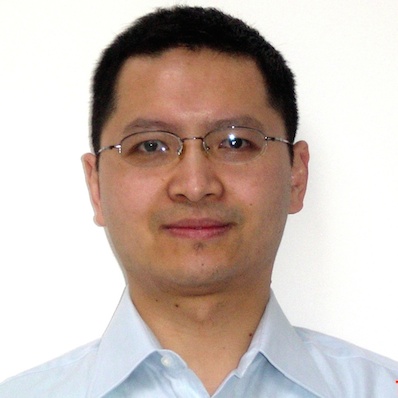
Summary
Deep reinforcement
learning has enabled artificial agents to achieve human-level
performances across many challenging domains, e.g. playing Atari games
and Go. I will present several important algorithms including deep
Q-Networks and asynchronous actor-critic algorithms (A3C), DDPG, SVG,
guided policy search. I will discuss major challenges and promising
results towards making deep reinforcement learning applicable to real
world problems in robotics and natural language processing.
Syllabus
1. Introduction to
reinforcement learning (RL)
2. Value-based deep RL
Deep Q-learning (deep Q-Networks)
Programming assignment of deep Q-Networks in OpenAI Gym to
play Atari games
3. Policy-based deep RL
Policy
gradients
Asynchronous actor-critic algorithms (A3C)
Natural gradients and trust region optimization (TRPO)
Deep deterministic policy gradients (DDPG), SVG
4.
Model-based deep RL: Alpha Go and guided policy search
5. Deep
learning in multi-agent games: fictitious self-play
6. Inverse
RL
7. Transfer in RL
8. Frontiers
Application
to robotics
Application to natural language
understanding
References
Pre-requisites
Basic knowledge of
reinforcement learning, deep learning and Markov decision processes
Short-bio
Li Erran Li received his
Ph.D. in Computer Science from Cornell University advised by Joseph
Halpern. He is currently with Uber and an adjunct professor in the
Computer Science Department of Columbia University. Before that, He
worked as a researcher in Bell Labs. His research interests are AI, deep
learning, machine learning algorithms and systems. He is an IEEE Fellow
and an ACM Distinguished Scientist.
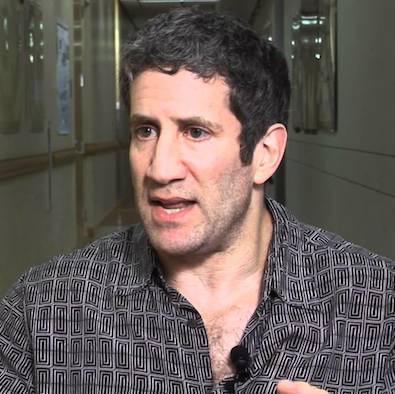
Summary
Deep learning is often
pitched as a general, universal solution to AI. The pitch promises that
with sufficient data, a generic neural architecture and learning
algorithm can perform end-to-end processing; it is not necessary to
understand the domain, engineer features, or specialize models. Although
this fantasy holds true in the limit of infinite data and infinite
computing cycles, bounds on either -- or on the quality or completeness
of data -- often make the promise of deep learning hollow. To overcome
limitations of data and computing, an alternative is to customize models
to characteristics of the domain. Much of the art of modern deep
learning is determining how to incorporate diverse forms of domain
knowledge into a model via its representations, architecture, loss
function, and data transformations. Domain-appropriate biases constrain
the learning problem and thereby compensate for data limitations. A
classic form of bias for vision tasks--used even before the invention of
back propagation--is the the convolutional architecture, exploiting the
homogeneity of image statistics and the relevance of local spatial
structure. Many generic tricks of the trade in deep learning can be cast
in this manner--as suitable forms of domain bias. Beyond these generic
tricks, I will work through illustrations of domains in which prior
knowledge can be leveraged to creatively construct models. My own
particular research interest involves cognitively-informed machine
learning, where an understanding of the mechanisms of human perception,
cognition, and reasoning can serve as a powerful constraint on models
that are intended to predict human preferences and behavior.
Syllabus
* The scaling
problem
* Bias-variance dilemma
* Imposing domain-appropriate
bias
- via loss functions
- via representations and
representational constraints
- via data augmentation
- via
architecture design
* Case studies of model crafting: memory in
humans and recurrent networks
References
Geman, S., Bienenstock,
E., & Doursat, R. (1992). Neural networks and the bias-variance dilemma.
Neural Computation, v. 4, n. 1, pp. 1-58.
Other references will be
provided during the lectures.
Pre-requisites
Basic background in
probability and statistics
Short-bio
Michael Mozer received a
Ph.D. in Cognitive Science at the University of California at San Diego
in 1987. Following a postdoctoral fellowship with Geoffrey Hinton at the
University of Toronto, he joined the faculty at the University of
Colorado at Boulder and is presently an Professor in the Department of
Computer Science and the Institute of Cognitive Science. He is secretary
of the Neural Information Processing Systems Foundation and has served
as chair of the Cognitive Science Society. He is interested both in
developing machine learning algorithms that leverage insights from human
cognition, and in developing software tools to optimize human
performance using machine learning methods.

Summary
Applications of Deep
Learning Models in Human-Computer Interaction Research
Syllabus
The opportunities for
interaction with computer systems are rapidly expanding beyond
traditional input and output paradigms: full-body motion sensors,
brain-computer interfaces, 3D displays, touch panels are now commonplace
commercial items. The profusion of new sensing devices for human input
and the new display channels which are becoming available offer the
potential to create more involving, expressive and efficient
interactions in a much wider range of contexts. Dealing with these
complex sources of human intention requires appropriate mathematical
methods; modelling and analysis of interactions requires sophisticated
methods which can transform streams of data from complex sensors into
estimates of human intention.
This tutorial will focus on the use of
inference and dynamical modelling in human-computer interaction. The
combination of modern statistical inference and real-time closed loop
modelling offers rich possibilities in building interactive systems, but
there is a significant gap between the techniques commonly used in HCI
and the mathematical tools available in other fields of computing
science. This tutorial aims to illustrate how to bring these
mathematical tools to bear on interaction problems, and will cover basic
theory and example applications from:
References
General basic
background in machine learning and interest in human-computer
interaction or information retrieval
Pre-requisites
tbc.
Short-bio
Roderick Murray-Smith is a
Professor of Computing Science at Glasgow University, leading the Inference, Dynamics and
Interaction research group, and heads the 50-strong Section on
Information, Data and Analysis, which also includes the Information
Retrieval, Computer
Vision & Autonomous systems and IDEAS Big Data groups. He
works in the overlap between machine learning, interaction design and
control theory. In recent years his research has included multimodal
sensor-based interaction with mobile devices, mobile spatial
interaction, AR/VR, Brain-Computer interaction and nonparametric machine
learning. Prior to this he held positions at the Hamilton Institute,
NUIM, Technical University of Denmark, M.I.T. (Mike Jordan’s lab), and
Daimler-Benz Research, Berlin, and was the Director of SICSA, the
Scottish Informatics and Computing Science Alliance (all academic CS
departments in Scotland). He works closely with the mobile phone
industry, having worked together with Nokia, Samsung, FT/Orange,
Microsoft and Bang & Olufsen. He was a member of Nokia's Scientific
Advisory Board and is a member of the Scientific Advisory Board for the
Finnish Centre of Excellence in Computational Inference Research. He has
co-authored three edited volumes, 29 journal papers, 18 book chapters,
and 88 conference papers.
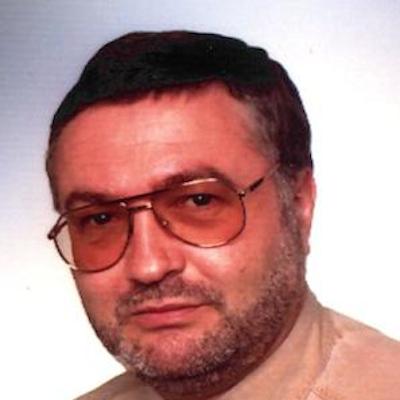
Summary
The last 40 years have
seen a dramatic progress in machine learning and statistical methods for
speech and language processing like speech recognition, handwriting
recognition and machine translation. Most of the key statistical
concepts had originally been developed for speech recognition. Examples
of such key concepts are the Bayes decision rule for minimum error rate
and probabilistic approaches to acoustic modelling (e.g.hidden Markov
models) and language modelling. Recently the accuracy of speech
recognition could be improved significantly by the use of artificial
neural networks, such as deep feedforward multi-layer perceptrons and
recurrent neural networks (incl. long short-term memory extension). We
will discuss these approaches in detail and how they fit into the
probabilistic approach.
Syllabus
Part 1: Statistical
Decision Theory, Machine Learning and Neural Networks.
Part 2:
Speech Recognition (Time Alignment, Hidden Markov models, neural nets,
attention models)
Part 3: Machine Translation (Word Alignment,
Hidden Markov models, neural nets, attention models).
References
Bourlard, H. and
Morgan, N., Connectionist Speech Recognition - A Hybrid Approach, Kluwer
Academic Publishers, ISBN 0-7923-9396-1, 1994.
L. Deng, D. Yu: Deep
learning: methods and applications. Foundations and Trends in Signal
Processing, Vol. 7, No. 3–4, pp. 197-387, 2014.
P. Koehn:
Statistical Machine Translation, Cambridge University Press, 2010.
Pre-requisites
Familiarity with
linear algebra, numerical mathematics, probability and statistics,
elementary machine learning..
Short-bio
Hermann Ney is a full
professor of computer science at RWTH Aachen University, Germany. His
main research interests lie in the area of statistical classification,
machine learning, neural networks and human language technology and
specific applications to speech recognition, machine translation and
handwriting recognition. In particular, he has worked on dynamic
programming and discriminative training for speech recognition, on
language modelling and on machine translation. His work has resulted in
more than 700 conference and journal papers (h-index 87, 39000
citations; estimated using Google scholar). He and his team contributed
to a large number of European (e.g. TC-STAR, QUAERO, TRANSLECTURES,
EU-BRIDGE) and American (e.g. GALE, BOLT, BABEL) large-scale joint
projects. Hermann Ney is a fellow of both IEEE and ISCA (Int. Speech
Communication Association). In 2005, he was the recipient of the
Technical Achievement Award of the IEEE Signal Processing Society. In
2010, he was awarded a senior DIGITEO chair at LIMIS/CNRS in Paris,
France. In 2013, he received the award of honour of the International
Association for Machine Translation. In 2016, he was awarded an advanced
grant of the European Research Council (ERC).
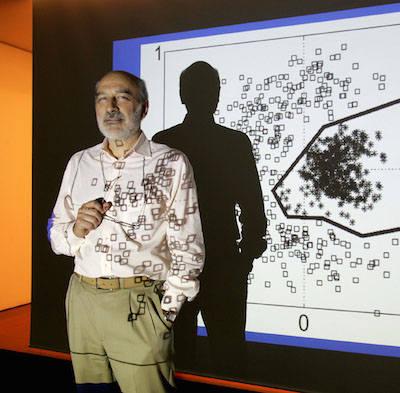
Summary
Syllabus
I-Requisites for a
Cognitive Architecture
• Processing in space
• Processing in time
and memory
• Top down and bottom processing
• Extraction of
information from data with generative models
• Attention
II-
Putting it all together
• Empirical Bayes with generative models
• Clustering of time series with linear state models
•
Information Theoretic Autoencoders
III- Current work
•
Extraction of time signatures with kernel ARMA
• Attention Based
video recognition
• Augmenting Deep Learning with memory
References
Pre-requisites
Short-bio
Jose C. Principe is a
Distinguished Professor of Electrical and Computer Engineering at the
University of Florida where he teaches advanced signal processing,
machine learning and artificial neural networks (ANNs). He is Eckis
Professor and the Founder and Director of the University of Florida
Computational NeuroEngineering Laboratory (CNEL) www.cnel.ufl.edu. The
CNEL Lab innovated signal and pattern recognition principles based on
information theoretic criteria, as well as filtering in functional
spaces. His secondary area of interest has focused in applications to
computational neuroscience, Brain Machine Interfaces and brain dynamics.
Dr. Principe is a Fellow of the IEEE, AIMBE, and IAMBE. Dr. Principe
received the Gabor Award, from the INNS, the Career Achievement Award
from the IEEE EMBS and the Neural Network Pioneer Award, of the IEEE
CIS. He has more than 33 patents awarded over 800 publications in the
areas of adaptive signal processing, control of nonlinear dynamical
systems, machine learning and neural networks, information theoretic
learning, with applications to neurotechnology and brain computer
interfaces. He directed 93 Ph.D. dissertations and 65 Master theses. He
wrote in 2000 an interactive electronic book entitled 'Neural and
Adaptive Systems' published by John Wiley and Sons and more recently
co-authored several books on 'Brain Machine Interface Engineering'
Morgan and Claypool, 'Information Theoretic Learning', Springer, 'Kernel
Adaptive Filtering', Wiley and 'System Parameter Adaption: Information
Theoretic Criteria and Algorithms', Elsevier. He has received four
Honorary Doctor Degrees, from Finland, Italy, Brazil and Colombia, and
routinely serves in international scientific advisory boards of
Universities and Companies. He has received extensive funding from NSF,
NIH and DOD (ONR, DARPA, AFOSR).

Summary
This course will cover the
foundations of deep learning with its application to vision and text
understanding. Attendees will become familiar with two corner stone
concepts of most successful applications of deep learning today:
convolutional neural networks, and embeddings. The former is employed in
audio and visual processing applications, while the latter is used for
representing text, graphs and other discrete or symbolic data. Finally,
we are going to learn about how we can further extend these methods to
deal with sequential data, like videos. Lectures will provide
intuitions, the underlying mathematics, typical applications, code
snippets and references. By the end of these three lectures, attendees
are expected to gain enough familiarity to be able to apply these basic
tools to standard datasets on their own.
Syllabus
Session 1 - Deep Learning
for Vision and Audio Processing Applications
The basics: from logistic regression to fully connected neural networks,
and from fully connected neural networks to convolutional neural
networks (CNNs).
Special layers used in vision applications.
Example of CNNs using the pyTorch open source library.
How neural networks
can be adapted to work with discrete symbolic data like text: the
concept of embedding.
Methods using embeddings for a variety of
text application tasks.
Example of learning from text using
pyTorch.
Learning from sequences: Recurrent Neural Networks (RNNs).
How to
train and generate from RNNs, variants of RNNs.
Examples of
applications of RNNs using pyTorch.
Pre-requisites
Basic knowledge of
linear algebra, calculus, and statistics.
Short-bio
Marc’Aurelio Ranzato is
currently a research scientist at the Facebook AI Research lab in New
York City. He previously worked at Google in the Brain team from 2011 to
2013, and before that, he was a post-doctoral fellow in Machine
Learning, University of Toronto, with Geoffrey Hinton. He earned his
Ph.D. in Computer Science at New York University advised by Yann LeCun.
He is originally from Padova in Italy, where he graduated in Electronics
Engineering. Marc’Aurelio is interested in Machine Learning, Computer
Vision, Natural Language Processing and, more generally, Artificial
Intelligence. More specifically, he has worked on methods to learn
hierarchical representations of data, unsupervised learning and methods
for structured prediction. His research has been applied to visual
object recognition, face recognition, speech recognition, machine
translation, summarization and many other tasks. Marc’Aurelio has served
as Area Chair for several major conferences, like NIPS, ICML, CVPR, and
ICCV. He has been Senior Program Chair for ICLR 2017 and guest editor
for IJCV.

Summary
In recent years, deep
convolutional neural networks (CNNs) have been shown to deliver
excellent performance on a variety of object detection tasks, and much
has been made of how these CNNs have been inspired by insights into how
the brain performs vision. Foremost among these insights was the notion
of the brain’s visual system as a 'simple-to-complex' feedforward
hierarchy of interleaving pooling and template match stages. Yet, the
neuroscience underlying CNNs is more than 20 years old, and neuroscience
research since then using various brain imaging techniques and other
experimental and computational approaches have dramatically advanced our
understanding of how the brain recognizes objects and assigns meaning to
sensory stimuli. This course will review the traditional picture of
visual processing in the brain that underlies CNNs, in particular the
concept of a feedforward, 'simple-to-complex' hierarchy, and then
present new insights from neuroscience regarding flexibility in brain’s
processing hierarchy, including shortcuts, additional levels, feedback
signaling and interactions across different hierarchies that have
greatly impacted our understanding of how the brain can perform
ultra-fast object localization, learn new concepts by leveraging prior
learning, and learn in deep hierarchies.
Syllabus
Session 1: The basics:
Vision in the brain: Feedforward, simple-to-complex hierarchies
Session 2: New insights into deep hierarchies in brain: Deep, deeper and
shallower processing; re-entrant signals for learning and conscious
awareness.
Session 3: Learning across modalities: From objects to
words, audition, and touch.
References
Riesenhuber, M., &
Poggio, T. (2002). Neural Mechanisms of Object Recognition. Current
Opinion in Neurobiology 12: 162-168.
Pre-requisites
Some basic
neuroscience knowledge is helpful, as is having a brain.
Short-bio
Dr. Riesenhuber is
Director of the Laboratory for Computational Cognitive Neuroscience and
Professor of Neuroscience at Georgetown University Medical Center. His
research investigates the neural mechanisms underlying object
recognition and task learning in the human brain across sensory
modalities. Current research foci are ultra-rapid object localization,
leveraging prior learning, multi-tasking, and vibrotactile object
recognition and speech. The computational model at the core of his
research has been quite successful in elucidating the neural mechanisms
underlying robust invariant object recognition, contributing to
Technology Review Magazine’s naming him one of their TR100 in 2003, “the
100 people under age 35 whose contributions to emerging technologies
will profoundly influence our world.” Dr. Riesenhuber has received
several awards, including a McDonnell-Pew Award in Cognitive
Neuroscience and an NSF CAREER Award. He holds a PhD in computational
neuroscience from MIT.
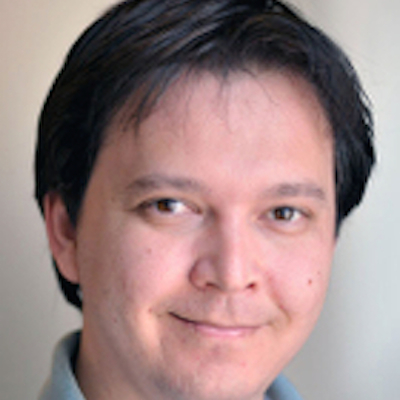
Summary
The goal of the tutorial
is to introduce the recent and exciting developments of various deep
learning methods. The core focus will be placed on algorithms that can
learn multi-layer hierarchies of representations, emphasizing their
applications in information retrieval, data mining, collaborative
filtering, and computer vision.
Syllabus
The tutorial will be
split into two parts.
1: The first part will provide a gentle
introduction into graphical models, neural networks, and deep learning
models. Topics will include:
Unsupervised learning methods,
including autoencoders, restricted Boltzmann machines, and methods for
learning over-complete representations.
Supervised methods for deep
models, including deep convolutional neural network models and their
applications to text comprehension, data mining, image and video
analysis.
2: The second part of the tutorial will introduce more
advanced models, including Variational Autoencoders, Generative
Adversarial Networks, Deep Boltzmann Machines, and Recurrent Neural
Networks. We will also address mathematical issues, focusing on
efficient large-scale optimization methods for inference and
learning.
Throughout the tutorial, we will highlight applications of
deep learning methods in the areas of natural language processing,
reading comprehension, multimodal learning, collaborative filtering, and
image/video analysis.
References
https://simons.berkeley.edu/talks/tutorial-deep-learning
Pre-requisites
Basic knowledge of
probability, linear algebra, and introductory machine learning.
Short-bio
Ruslan Salakhutdinov
received his PhD in machine learning (computer science) from the
University of Toronto in 2009. After spending two post-doctoral years at
the Massachusetts Institute of Technology Artificial Intelligence Lab,
he joined the University of Toronto as an Assistant Professor in the
Department of Computer Science and Department of Statistics. In February
of 2016, he joined the Machine Learning Department at Carnegie Mellon
University as an Associate Professor.
Ruslan's primary interests lie
in deep learning, machine learning, and large-scale optimization. His
main research goal is to understand the computational and statistical
principles required for discovering structure in large amounts of data.
He is an action editor of the Journal of Machine Learning Research and
served on the senior programme committee of several learning conferences
including NIPS and ICML. He is an Alfred P. Sloan Research Fellow,
Microsoft Research Faculty Fellow, Canada Research Chair in Statistical
Machine Learning, a recipient of the Early Researcher Award, Connaught
New Researcher Award, Google Faculty Award, Nvidia's Pioneers of AI
award, and is a Senior Fellow of the Canadian Institute for Advanced
Research.

Summary
With the diffusion of
cheap sensors, sensor-equipped devices (e.g., drones), and sensor
networks (such as Internet of Things), as well as the development of
inexpensive human-machine interaction interfaces, the ability to quickly
and effectively process sequential data is becoming more and more
important. Many are the tasks that may benefit from advancements in this
field, ranging from monitoring and classification of human behavior to
prediction of future events. Many are the approaches that have been
proposed in the past to learn in sequential domains, ranging from linear
models to early models of Recurrent Neural Networks, up to more recent
Deep Learning solutions. The lectures will start with the presentation
of relevant sequential domains, introducing scenarios involving
different types of sequences (e.g., symbolic sequences, time series,
multivariate sequences) and tasks (e.g., classification, prediction,
transduction). Linear models are first introduced, including linear
auto-encoders for sequences. Subsequently non-linear models and related
training algorithms are recalled, starting from early versions of
Recurrent Neural Networks. Computational problems and proposed solutions
will be presented, including novel linear-based pre-training approaches.
Finally, more recent Deep Learning models will be discussed. Lectures
will close with some theoretical considerations on the relationships
between Feed-forward and Recurrent Neural Networks, and a discussion
about dealing with more complex data (e.g., trees and graphs).
Syllabus
1. Introduction to
sequential domains and related computational tasks
2. Linear models
for sequences
3. Linear auto-encoders for sequences: optimal and
approximated solutions
4. Recurrent Neural Network models and related
training algorithms
5. Computational problems of Recurrent Neural
Networks and some 'solutions'
6. Novel linear-based pre-training
approaches for Recurrent Neural Networks
7. Recent Deep Learning
models
8. Relationship between Feed-forward and Recurrent Neural
Networks
9. Beyond sequences: trees and graphs
References
Pre-requisites
Basic algebra,
calculus, and probability at the introductory college level.
Short-bio
Prof. Sperduti is full
professor of Computer Science at the Department of Mathematics of the
University of Padova since March 1, 2002. Previously, he has been
associate professor (1998-2002) and assistant professor (1995-1998) at
the Department of Computer Science of the University of Pisa. His
research interests are mainly in Neural Networks, Kernel Methods, and
Process Mining. Prof. Sperduti has been PC member of several conferences
(such as IJCAI, ECAI, ICML, ECML, SIGIR, ECIR, SDM, IJCNN, ICANN, ESANN,
...), and guest editor of special issues for the journals Neural
Networks, IEEE TKDE, and Cognitive Systems Research. He is in the
editorial board of the journal Theoretical Computer Science (Section C),
the European Journal on Artificial Intelligence, IEEE Intelligent
Systems Magazine, and the journal Neural Networks. He has been associate
editor (2009-2012) for the IEEE Transactions on Neural Networks and
Learning Systems. Starting from 2001 till 2010, he has been member of
the European Neural Networks Society (ENNS) Executive Committee, chair
of the DMTC of IEEE CIS for the years 2009 and 2010, chair of the NNTC
for the years 2011 and 2012, and chair of the IEEE CIS Student
Games-Based Competition Committee for the year 2013. He is senior member
IEEE. He has delivered several tutorials in main Artificial Intelligence
conferences (WCCI 2012, IJCAI 2001, IJCAI 1999, IJCAI 1997) and summer
schools. He was the recipient of the 2000 AI*IA (Italian Association for
Artificial Intelligence) 'MARCO SOMALVICO' Young Researcher Award. He as
been invited plenary speaker for the conferences ICANN 2001, WSOM 2007,
CIDM 2013. Prof. Sperduti is the author of more than 180 publications on
refereed journals, conferences, and chapters in books.

Summary
It is widely believed that
deep learning techniques could fundamentally change healthcare
industries. Even though recent development in deep learning has achieved
successes in many other applications, such as computer vision, natural
language processing, and speech recognition. However, healthcare
applications pose many significantly different challenges to existing
deep learning models. Examples include but not are limited to
interpretations for prediction, heterogeneity in data, missing value,
rare events, interpretation and privacy issues. In this short class, we
will discuss a series of problems in healthcare that can benefit from
deep learning models, the challenges as well as recent advances in
addressing those.
Syllabus
References
Pre-requisites
The tutorial is
targeted at researchers in machine learning as well as researchers
working on the health-related applications. It will also attract a
broader of audience who work on applying deep learning models to
applications with heterogenous data. The prerequisites include
graduate-level machine learning classes and ideally basic knowledge on
deep learning.
Short-bio
Jimeng Sun, Georgia
Institute of Technology (jsun@cc.gatech.edu), Dr. Sun is an associate
professor of College of Computing at Georgia Tech. Prior to Georgia
Tech, he was a researcher at IBM TJ Watson Research Center. His research
focuses on health analytics and data mining, especially in designing
tensor factorizations, deep learning methods, and large-scale predictive
modeling systems. Dr. Sun has been collaborating with many healthcare
organizations: Children's Healthcare of Atlanta, Vanderbilt
university medical center, Mass General hospital, Sutter Health,
Geisinger, Northwestern and UCB. He published over 120 papers and filed
over 20 patents (5 granted). He has received ICDM best research paper
award in 2008, SDM best research paper award in 2007, and KDD
Dissertation runner-up award in 2008. Dr. Sun received B.S. and M.Phil.
in Computer Science from Hong Kong University of Science and Technology
in 2002 and 2003, M.Sc and PhD in Computer Science from Carnegie Mellon
University in 2006 and 2007.

Summary
We will discuss methods of
applying AI, in particular deep learning but also other methods from
machine learning, optimization and tree search, to games, in particular
video games. While AI methods have been used for playing board games
since the birth of the concept of AI itself, it has only relatively
recently been applied to playing a broad range of video games, which
offer new kinds of challenges. There are at least two different reasons
for doing this: in order to provide value for game design and
development, for example by automatically testing games or providing
interesting adversaries, and for testing AI methods in realistic
environments. However, the applications of deep learning and other
similar methods go beyond playing games, and into creating game content
itself. This is challenging task for AI methods, which has often been
approached with search-based methods, but where a recent crop of machine
learning-based approaches has recently appeared.
Syllabus
Part 1: Playing Games
- Why play games?
- Tree search methods
- Neuroevolution and
reinforcement learning
- Supervised learning
Part 2:
Generating Content
- Why generate content?
- Constructive
methods
- Search-based methods
- Machine learning-based
methods
References
Shaker, N., Togelius,
J., & Nelson, M. (2016). Procedural Content Generation In Games.
Springer. Available for free online at http://www.pcgbook.com.
Yannakakis,
G. N., Togelius, J. (2017). Artificial Intelligence in Games. Springer
(being published later this year).
Yannakakis, G. N., & Togelius, J.
(2015). A panorama of artificial and computational intelligence in
games. IEEE Transactions on Computational Intelligence and AI in Games,
7(4), 317-335.
Pre-requisites
An understanding of
artificial intelligence, including at least basic knowledge of modern
machine learning methods. An interest in games.
Short-bio
Julian Togelius is an
Associate Professor in the Department of Computer Science and
Engineering, New York University, USA. He works on all aspects of
computational intelligence and games and on selected topics in
evolutionary computation and evolutionary reinforcement learning. His
current main research directions involve search-based procedural content
generation in games, general video game playing, player modeling, and
fair and relevant benchmarking of AI through game-based competitions. He
is a past chair of the IEEE CIS Technical Committee on Games, and an
associate editor of IEEE Transactions on Computational Intelligence and
Games. Togelius holds a BA from Lund University, an MSc from the
University of Sussex, and a PhD from the University of Essex. He has
previously worked at IDSIA in Lugano and at the IT University of
Copenhagen.

Summary
The course starts with a
basic part where the methods, opportunities and limitations of neural
networks and learning machines are briefly summarized. Support Vector
Machines SVM are a powerful methodology for solving problems in
nonlinear classification, function estimation and density estimation
which has received widespread attention. Least Squares Support Vector
Machines (LS-SVM) are reformulations of the standard SVMs which lead to
simplicity and performance by solving linear KKT systems, with strong
application potentials. LS-SVMs are closely related to regularization
networks and Gaussian processes but additionally emphasize and exploit
deeper insights and opportunities of primal-dual formulations. Links
between kernel versions of classical pattern recognition algorithms such
as kernel Fisher discriminant analysis and extensions to unsupervised
learning, recurrent networks and control are produced. Robustness,
sparseness and weightings can be incorporated into LS-SVMs. Recent
developments are in kernel spectral clustering, data visualization and
dimensionality reduction, and survival analysis. For very large scale
problems a method of Fixed Size LS-SVM is proposed. Several successful
applications in our interdisciplinary research on medical diagnostics
and time series predictions will be highlighted. The use of neural
networks and LS SVM in deep learning will be presented.
Syllabus
Part 1 : Methods,
capabilities, limitations and fascinating applications of artificial
neural networks and support vector machines
Part 2 Least squares
support vector machines LS SVM, the methods and the use of supervised
and unsupervised designs.
Part 3 Applications of neural networks and
support vector machines in research of medical diagnostics for ovarian
cancer, time series modeling for electrical energy consumption, weather
forecasting
Part 4 Combining neural networks and LS SVM with deep
learning methods.
References
Surveys/Monographs:
J.A.K. Suykens, T. Van Gestel, J. De Brabanter, B. De Moor, J.
Vandewalle, Least Squares Support Vector Machines, World Scientific,
Singapore, 2002 (ISBN 981-238-151-1)
Papers:
Van
Gestel T., Suykens J.A.K., Baesens B., Viaene S., Vanthienen J.,
Dedene G., De Moor B., Vandewalle J., Benchmarking Least Squares
Support Vector Machine Classifiers, Machine Learning, vol. 54, no.
1, Jan. 2004, pp. 5-32.
Suykens J.A.K., Vandewalle J.,
The K.U.Leuven competition data : a challenge for advanced neural
network techniques, in Proc. of the European Symposium on Artificial
Neural Networks (ESANN'2000), Bruges, Belgium, 2000, pp.
299-304.
http://www.esat.kuleuven.be/sista/lssvmlab/
Lu C., Van
Gestel T., Suykens J.A.K., Van Huffel S., Vergote I., Timmerman D.,
Preoperative prediction of malignancy of ovarium tumor using least
squares support vector machines, Artificial Intelligence in
Medicine, vol. 28, no. 3, Jul. 2003, pp. 281-306.
Espinoza M., Suykens J.A.K., Belmans R., De Moor B., Electric Load
Forecasting - Using kernel based modeling for nonlinear system
identification, IEEE Control Systems Magazine, Special Issue on
Applications of System Identification, vol. 27, no. 5, Oct. 2007,
pp. 43-57.
Langone R., Mall R., Vandewalle J., Suykens J.
A. K., Discovering cluster dynamics using kernel spectral methods,
in Chapter 1 of Complex Systems and Networks, (Jinhu L., Xinghuo Y.,
Guanrong C., and and Wenwu Y., eds.), vol. 2 {The Springer Series in
Understanding Complex Systems}, Springer-Verlag Berlin, 2016, pp.
1-24.
Karevan Z., Suykens J.A.K., Clustering-based
feature selection for black-box weather temperature prediction, in
Proc. of the International Joint Conference on Neural Networks
(IJCNN), Vancouver, Canada, Jul. 2016, pp. 1-8.
Pre-requisites
Familiarity with
linear algebra, calculus, probability theory, statistics, basic
optimization and algorithm design is expected, at the level that is
typically introduced in bachelor level in computer science or
engineering programs.
Short-bio
Joos Vandewalle is
emeritus full professor with assignments at the Department Electrical
Engineering (ESAT), Katholieke Universiteit Leuven, Belgium. He headed
the SCD division at ESAT, with more than 150 researchers. He held
visiting positions University of California, Berkeley and I3S CNRS
Sophia Antipolis, France. For more than 20 years he taught courses in
linear algebra, linear and nonlinear system and circuit theory, signal
processing and neural networks. His research interests are in
mathematical system theory and its applications in circuit theory,
control, signal processing, cryptography and neural networks where he
supervised 43 PhDs. He (co-)authored more than 300 international journal
papers and 6 books. He obtained several best paper awards and research
awards. His publications received over 38 000 googlescholar citations.
He is a Fellow of IEEE, IET, and EURASIP and member of the Academia
Europaea and of the Belgian Academy of Sciences. From 2009 till 2013 he
was a member of the Board of Governors of the IEEE Circuits and Systems
Society. He is a member of the jury of the BBVA Foundation Frontiers of
Knowledge Award in ICT. He is currently the president of the Royal
Belgian Academy KVAB. Website.

Summary
This short course
introduces generative models and the associated learning, inference and
sampling algorithms that are commonly used in unsupervised learning,
i.e., learning from unlabeled data. We shall focus on two classes of
models, namely the undirected energy based models and the directed
latent variable models, including the deep undirected and directed
graphical models parametrized by convolutional neural networks.
Syllabus
(1) Markov random field
models, maximum entropy and maximum likelihood.
(2) Latent factor
models including factor analysis, independent component analysis, sparse
coding, matrix factorization; auto-encoder and embedding.
(3) Deep
undirected and directed models, maximum likelihood, contrastive
divergence, variational, adversarial, and cooperative learning
methods.
The focus will be on (3), with (1) and (2) laying the
groundwork.
References
Ian Goodfellow and
Yoshua Bengio and Aaron Courville, Deep Learning, MIT press, 2016.
Pre-requisites
Basic knowledge of
probability, statistics and machine learning.
Short-bio
Ying Nian Wu received
his Ph.D. degree in statistics from Harvard in 1996. He was an assistant
professor from 1997 to 1999 in Department of Statistics, University of
Michigan. He joined University of California, Los Angeles (UCLA) in
1999, and is currently a professor in Department of Statistics, UCLA.
His research interests include statistical modeling, computing and
learning, with applications in computer vision.

Summary
In this tutorial I am
going to explain the connections between the 'new wave' of multi-layer
neural network inspired models in 'Deep Learning', with the well founded
probabilistic graphical models, Bayesian inference, kernel methods, and
many other long standing statistical learning methodologies studied in
the broader machine learning community, and discuss the principles
behind inference, learning, evaluations, and argumentation of these
techniques. Then I will focus on stratifying various deep generative
models with a unified statistical framework to better understand their
behaviors, relationships, and new opportunities. Finally I will discuss
the computational challenges in large scale deep learning, and discuss
algorithm design, system design, and standardized universal platforms
for computing support in deep learning.
References
See in Materials
Pre-requisites
Knowledge of basic
machine learning, graphical models, statistics
Short-bio
Eric Xing is a Professor
of Computer Science at Carnegie Mellon University. He is currently the
Associate Department Head of the Machine Learning Department, founding
director of the Center for Machine Learning and Health at Carnegie
Mellon University, and a Fellow of the Association of Advancement of
Artificial Intelligence (AAAI Fellow). He completed his undergraduate
study at Tsinghua University, and holds a PhD in Molecular Biology and
Biochemistry from the State University of New Jersey, and a PhD in
Computer Science from the University of California, Berkeley. His main
research interests are the development of machine learning and
statistical methodology, and large-scale computational system and
architectures, for solving problems involving automated learning,
reasoning, and decision-making in high-dimensional, multimodal, and
dynamic possible worlds in artificial, biological, and social systems.
Prof Xing is a board member of the International Machine Learning
Society; in 2014, he served as the Program Chair of the International
Conference of Machine Learning (ICML), and in 2019, he will serve as the
General Chair of ICML.

Summary
Understanding human
language has been one of the long-standing research goals since the dawn
of AI. In this lecture, we will discuss how recently developed methods,
mostly deep neural network models, advance the state of the art. The
lecture starts from the broad introduction of the research of natural
language processing, analyzing why understanding language remains
difficult. We will introduce several representative NLP tasks and
discuss the role of machine leaning in the data-driven approaches.
Historical and modern paradigms of problem formulations and models will
also be briefly surveyed in this part.
The rest of lecture focuses on
two key natural language understanding tasks: information extraction and
question answering. Transforming unstructured text to structured
databases, information extraction aims to find the entities and their
relationships in text, as well as to make the extracted facts easily
accessible programmatically. We will first give an overview on the basic
problem setting, such as binary relation extraction as sequence labeling
problems. After that, we will emphasize more on the latest distant
supervision methods, which model the multi-sentence, n-ary relation
settings using structured LSTM models. New approaches for embedding
entities and relations in a knowledge base for reasoning for previously
unknown facts will also be covered.
Question answering, while often
used as the means to demonstrate machine intelligence, is an important
application for fulfilling user's information need. In this part, we'll
start by introducing the general framework of answering question using
unstructured text, such as Wikipedia or the Web, and describe the
current state-of-the-art deep learning approaches. We will also discuss
how to leverage structured data such as databases or tables to answer
questions, with the focus on semantic parsing methods.
Syllabus
Part 1. Background of Natural Language Processing and Machine Learning
Part 2. Knowledge Base Completion and Information Extraction
Part 3. Semantic Parsing and Question Answering
References
Yih, He & Gao. Deep learning and continuous representations for natural language processing. Tutorial presented in HLT-NAACL-2015, IJCAI-2016.
Yih & Ma. Question answering with knowledge bases, Web and beyond. Tutorial presented in HLT-NAACL-2016, SIGIR-2016.
Poon, Quirk, Toutanova & Yih. Natural Language Processing for Precision Medicine. Tutorial to be presented in ACL-2017.
Pre-requisites
No prerequisites.
Short-bio
Scott Wen-tau Yih is a Senior
Researcher at Microsoft Research Redmond. His research interests include
natural language processing, machine learning and information retrieval.
Yih received his Ph.D. in computer science at the University of Illinois
at Urbana-Champaign. His work on joint inference using integer linear
programming (ILP) helped the UIUC team win the CoNLL-05 shared task on
semantic role labeling, and the approach has been widely adopted in the
NLP community since then. After joining Microsoft Research, he has
worked on email spam filtering, keyword extraction and search & ad
relevance. His recent work focuses on continuous semantic
representations using neural networks and matrix/tensor decomposition
methods, with applications in lexical semantics, knowledge base
embedding, semantic parsing and question answering. Yih received the
best paper award from CoNLL-2011, an outstanding paper award from
ACL-2015 and has served as area chairs (HLT-NAACL-12, ACL-14,
EMNLP-16,17), program co-chairs (CEAS-09, CoNLL-14) and
action/associated editors (TACL, JAIR) in recent years.

Summary
Can AI understand how
players feel, think and react and, in turn, automatically design new
games for them? Can those computationally designed games be considered
creative? When does this happen and who judges after all? How can Deep
Learning help us achieve these goals?
In this course I will address
the above questions by positioning computer games as the ideal
application domain for computational creativity, affective computing and
machine (deep) learning for the unique features they offer. For that
purpose, I will identify a number of key creative facets in modern game
development and discuss their required orchestration for a final
successful game product. I will also focus on the study of player
emotion and will detail the key phases for efficient game-based affect
interaction. Advanced deep learning methods for player experience
modeling, game adaptation, procedural content generation, and
computational game creativity will be showcased via a plethora of
projects developed at the Institute of Digital Games, University of
Malta (game.edu.mt).
Syllabus
Session 1: Introduction
to the domain of games. Why games are the ideal arena for AI and deep
learning (DL)? What is there beyond gameplaying for AI/DL and why it is
even more challenging?
Session 3: Deep learning for generating content
References
H. P. Martinez, Y.
Bengio and G. N. Yannakakis, “Learning Deep Physiological Models of
Affect,” IEEE Computational Intelligence Magazine, Special Issue on
Computational Intelligence and Affective Computing, pp. 20-33, May,
2013.
A. Liapis, H. P. Martinez, J. Togelius and G. N. Yannakakis,
“Transforming Exploratory Creativity with DeLeNoX,” in Proceedings of
the Fourth International Conference on Computational Creativity, pp.
71–78, 2013.
H. P. Martinez and G. N. Yannakakis, “Deep Multimodal
Fusion: Combining Discrete Events and Continuous Signals,” in
Proceedings of the International Conference in Multimodal Interaction
(ICMI), 2014.
Pre-requisites
Basic knowledge of
statistics and calculus.
Short-bio
Prof. Georgios N.
Yannakakis is Associate Professor at the Institute of Digital Games,
University of Malta (UoM). He received the Ph.D. degree in Informatics
from the University of Edinburgh in 2005. Prior to joining the Institute
of Digital Games, UoM, in 2012 he was an Associate Professor at the
Center for Computer Games Research at the IT University of Copenhagen.
He does research at the crossroads of artificial intelligence,
computational creativity, affective computing, advanced game technology,
and human-computer interaction. Georgios N. Yannakakis is one of the
leading researchers within player affective modeling and adaptive
content generation for games and has pioneered the use of preference
learning algorithms to create statistical models of player experience
which drive the automatic generation of personalized game content. He
has published over 200 journal and conference papers in the
aforementioned fields; his work has been cited broadly and received
multiple awards. His research has been supported by numerous national
and European grants and has been featured in Science Magazine and New
Scientist among other venues. He has given keynote talks in the most
recognised conferences in the areas of his research activity and he has
organized a few of the most respected conferences in the areas of game
artificial intelligence (IEEE CIG 2010) and games research (FDG 2013).
He is an Associate Editor of the IEEE Transactions on Computational
Intelligence and AI in Games. Finally, he is the co-author of the first
academic textbook on game AI (gameaibook.org) offering a holistic view
of the field (to be published in 2017 by Springer). Web: http://yannakakis.net/

Summary
Few shot classification is
a task in which a classifier must be adapted to accommodate new classes
not seen in training, given only a few examples of each of these
classes. A naive approach, such as re-training the model on the new
data, would severely overfit. While the problem is quite difficult, it
has been demonstrated that humans have the ability to perform even
one-shot classification, where only a single example of each new class
is given, with a high degree of accuracy. Recently there has been a
flurry of work in machine learning, and significant progress, on this
problem, In this course we will discuss the variety of approaches to
this important problem.
Syllabus
The few-shot
classification problem; non-parametric models; metric learning; deep
learning for few-shot; novel loss functions and approaches
References
Metric learning: A
survey. Brian Kulis. Foundations and Trends in Machine Learning,
5(4):287–364, 321 2012.
One shot learning of simple visual concepts.
Brenden Lake, Ruslan Salakhutdinov, Jason Gross, Joshua Tenenbaum. In
CogSci, 2011.
Siamese neural networks for one-shot image recognition.
Gregory Koch, Richard Zemel, Ruslan Salakhutdinov. ICML Deep Learning
Workshop, 2015.
Pre-requisites
Familiarity with
math, probability and statistics is expected, at the level of an
undergraduate in computer science or enginereing program. Also basic
knowledge of deep networks will be assumed.
Short-bio
Richard Zemel is a
Professor of Computer Science at the University of Toronto, and the
Research Director and Co-Founder of the new Vector Institute for
Artificial Intelligence. Prior to that he was on the faculty at the
University of Arizona, and a Postdoctoral Fellow at the Salk Institute
and at CMU. He received the B.Sc. in History & Science from Harvard, and
a Ph.D. in Computer Science from the University of Toronto. His awards
and honors include a Young Investigator Award from the ONR and a US
Presidential Scholar award. He is a Senior Fellow of the Canadian
Institute for Advanced Research, an NVIDIA Pioneer of AI, and a member
of the NIPS Advisory Board. His recent research interests include
learning with weak labels, models of images and text, and fairness.